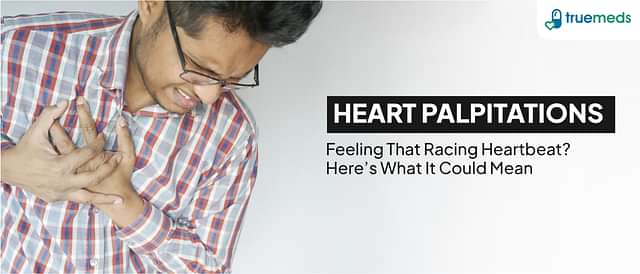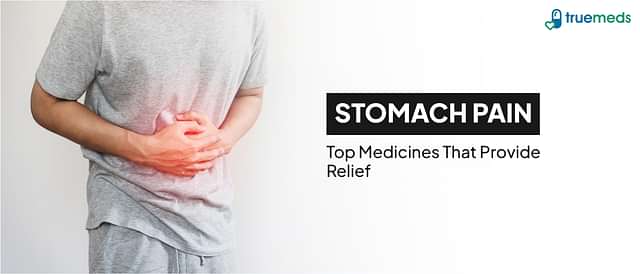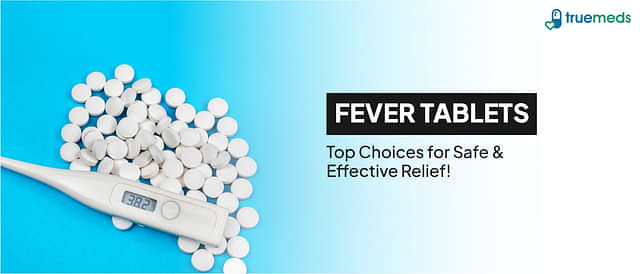Cardiovascular disease- Signs and symptoms of an unhealthy heart
Last updated on : 13 Dec, 2024
Read time : 8 min
What about Cardiovascular disease?
Cardiovascular disease is a general word that refers to a variety of different heart problems. CAD is the most common type of heart disease, and it is indicated by decreased blood flow to the heart muscle. The arteries that carry blood to the heart muscle are affected if you are suffering from Coronary artery disease (CAD). A heart attack can be caused by a decrease in blood flow.
Heart and blood vessel disease (also known as heart disease) encompasses a wide range of issues, many of which are linked to a process known as atherosclerosis.
Atherosclerosis is a disorder that occurs when a material called plaque accumulates in the artery walls. As a result of this accumulation, blood flow is delayed. If it occurs, a blood clot can obstruct the flow of blood throughout the body. It possibly can cause Heart attacks and strokes.
Cardiovascular diseases (CVDs) are a range of heart and blood vessel problems. They are as follows:
- Heart attack
- Stroke
- Heart failure
- Arrhythmia
- congenital heart disease
Causes of Cardiovascular diseases
- Heart attack: A heart attack occurs when a blood clot blocks blood flow to a portion of the heart. If the clot entirely obstructs blood flow, the section of the heart muscle supplied by that artery begins to die. Most people recover from their first heart attack and go on to live normal lives, gaining many more years of active activity. However, having a heart attack means that you must make certain modifications. The medications and lifestyle adjustments recommended by your doctor may differ depending on how seriously your heart was injured and the degree of heart disease that caused the heart attack.
- Stroke: An ischemic stroke (the most frequent type of stroke) happens when a blood vessel that supplies blood to the brain becomes blocked, typically due to a blood clot.
When a section of the brain’s blood supply is cut off, some brain cells begin to die. This can lead to the loss of functions controlled by that area of the brain, such as walking or speaking.
When a blood artery in the brain bursts, it causes a hemorrhagic stroke. Uncontrolled hypertension is the most common cause of this (high blood pressure).
Some stroke consequences are permanent if too many brain cells die as a result of oxygen deprivation. This population of cells is never replenished.
The good news is that brain cells do not always die following a stroke; instead, the damage is only transient. As wounded cells heal themselves, previously compromised function improves with time. (In other circumstances, adjacent uninjured brain cells may take over for the affected portions of the brain.)
In any case, strength may recover, speech may improve, and memory may improve. Stroke rehabilitation is all about the recovery process. - Heart failure: The heart’s inefficient ability of the heart to pump blood occurs in case of congestive heart failure. Heart failure does not imply that the heart has stopped beating; this is a widespread misconception. Instead, the heart continues to beat, but the body’s desire for blood and oxygen is unsatisfied.
If left untreated, heart failure might worsen. It is critical to follow the doctor’s directions if your loved one has heart failure. - Arrhythmia: An abnormal heartbeat is referred to as arrhythmia. Arrhythmias come in a variety of forms. The heart might beat too slowly, too quickly, or too irregularly.
Bradycardia, or a sluggish heart rate, occurs when the heart rate is less than 60 beats per minute. Tachycardia, or an abnormally fast heart rate, is defined as a heart rate of more than 100 beats per minute.
An arrhythmia can impair the function of your heart. Your heart may not be able to pump enough blood to meet your body’s needs if it has an irregular heartbeat.
Factors that raise your chances of getting cardiovascular disease.
- Unhealthy food, physical inactivity, cigarette use, and problematic alcohol consumption are the most major behavioural risk factors for heart disease and stroke. Behavioural risk factors can lead to high blood pressure, high blood glucose, high blood lipids, and obesity in some people. It is possible to detect these “intermediate-risk factors” in primary care settings, and they indicate an increased risk of cardiovascular disease.
- Tobacco cessation, salt reduction in the diet, eating more fruits and vegetables, regular physical activity, and avoiding problematic alcohol consumption have all been demonstrated to lessen the risk of cardiovascular disease. Health policies that foster an environment in which healthy choices are inexpensive and accessible are critical for inspiring people to acquire and maintain healthy behaviours.
- CVDs are also influenced by several underlying factors. Globalization, urbanisation, and population ageing are the key drivers driving social, economic, and cultural change. Poverty, stress and inherited factors are also CVD risk factors.
Furthermore, the pharmacological treatment for hypertension, diabetes and high blood lipids is required to lower cardiovascular risk and prevent heart attacks and strokes in persons with these cardiovascular diseases.
Signs and symptoms
The heart problem symptoms vary depending on the type of heart disease you have.
- Heart disease symptoms in your blood vessels
Atherosclerosis is a buildup of fatty plaques in your arteries that can harm your blood vessels and heart. Plaque buildup causes blood arteries to become narrowed or obstructed, which can result in a heart attack, chest pain (angina), or stroke.
Men and women may experience different symptoms of coronary artery disease. For example, men are more likely to suffer from chest pain. In addition to chest tightness, women are more likely to develop shortness of breath, nausea, and excessive tiredness.- -Chest pain, tightness, pressure, and discomfort are some of the signs and heart problem symptoms (angina)
-Breathing difficulty
-As a result of restricted blood vessels in your legs or arms, you may suffer numbness, weakness, or coldness in your hands, feet and arms
-Pain in the neck, jaw, throat, upper abdomen, or back
- -Chest pain, tightness, pressure, and discomfort are some of the signs and heart problem symptoms (angina)
- Coronary artery disease
Coronary artery disease may not be detected until you suffer a heart attack, angina, stroke, or heart failure. It’s critical to keep an eye out for cardiovascular symptoms and communicate any concerns with your doctor. - Regular assessments can detect cardiovascular disease early. Heart problem symptoms induced by irregular heartbeats (heart arrhythmias) Your heartbeat may be too fast, too slow, or irregular. Arrhythmia of the heart.
- Among the signs and symptoms are:
-Fluttering in the heart.
-Fast heartbeat (tachycardia)
-Slow Heart rate (bradycardia)
-Pain or discomfort in the chest
-Breathing difficulty
-Lightheadedness
-Dizziness
-Syncope (fainting) or near-fainting
Symptoms of heart defects
Congenital heart problems (serious cardiac defects) are frequently discovered soon after birth. Signs and symptoms of heart disease in children may include:
- Skin tone of pale grey or blue (cyanosis)
- As a result of restricted blood vessels in your legs or arms, you may suffer numbness, weakness, or coldness in your hands, feet and arms.
- Shortness of breath during feedings in a newborn, resulting in low weight gain
- Less significant congenital cardiac abnormalities are frequently undetected until later in childhood or maturity. The following are examples of non-life-threatening signs and symptoms of congenital cardiac defects:
- Being easily out of breath during exertion or activity
- Easily exhausted during exertion or activities
- Hands, ankles, or feet swelling
Symptoms of heart disease induced by a damaged heart muscle (cardiomyopathy)
You may have no heart problem symptoms in the early stages of cardiomyopathy. Several symptoms may arise as the sickness progresses:
- Breathlessness during physical exercise or at rest
- Legs, ankles, and feet swelling
- Fatigue
- Heartbeats that are irregular and feel fast, hammering, or fluttering
- Diarrhoea, lightheadedness, and fainting
Symptoms of heart disease caused by a heart infection
Diagnostic testing, surgical treatments, and drugs are all available.
Several tests and procedures may be performed in the hospital and during the first few weeks at home by the doctor. These tests assist the doctor in determining what caused the stroke or heart attack, as well as the extent of the damage. Some tests track progress to determine whether or not treatment is effective.
For the all latest coupons and offers on the medicines, follow us on Instagram and Facebook
Disclaimer
Our healthcare experts have carefully reviewed and compiled the information presented here to ensure accuracy and trustworthiness. It is important to note that this information serves as a general overview of the topic and is for informational purposes only. It is not intended to diagnose, prevent, or cure any health problem. This page does not establish a doctor-patient relationship, nor does it replace the advice or consultation of a registered medical practitioner. We recommend seeking guidance from your registered medical practitioner for any questions or concerns regarding your medical condition.
Popular Articles
Recent Articles
Top-Selling Medicines:
...View more
Top-Selling OTC:
...View more
Company
About UsHealth ArticleHealth StoriesDiseases & Health ConditionsAyurvedaAll MedicinesAll BrandsNeed HelpFAQSubscribe
Registered Office Address
Grievance Officer
Download Truemeds

Contact Us
Our customer representative team is available 7 days a week from 9 am - 9 pm.
v3.7.31
2025 - Truemeds | All rights reserved. Our content is for informational purposes only. See additional information.
Our Payment Partners









































